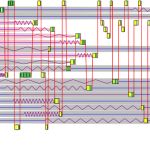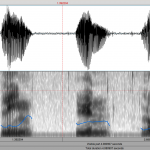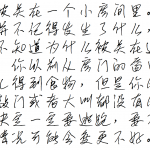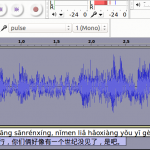Articles in the ‘Advanced’ category Page 22
-
Spaced repetition is not limited to flashcards
Spaced repetition is important for learning anything, but especially vocabulary in a foreign language like Chinese. However, there’s much more to spaced repetition than vocabulary flashcard apps! Even if you dislike such apps, make sure you incorporate spaced repetition in some other way.
Read → -
Looking up how to use words in Chinese the right way
Looking up how to express something in Chinese is not as easy as it looks. Assuming that a word, especially a verb, can be used the same way in Chinese as in your native language usually results in incorrect or awkward sentences. Stop assuming and look things up properly instead!
Read → -
Obligatory and optional tone change rules in Mandarin
As if learning basic tones wasn’t enough, tones in Mandarin also influence each other and change depending on context. Some of these tone change rules you have to learn, but others are better left alone and will be absorbed automatically over time.
Read → -
Learn Chinese implicitly through exposure with a seasoning of explicit instruction
Should you learn Chinese implicitly through exposure and usage, or explicitly through description and instruction? The answer is that adults need both, but that explicit learning is often used too much.
Read → -
Expanding your Chinese with 一步一个脚印
一步一个脚印 is a blog about translating and interpreting Chinese, providing high quality posts about vocabulary and expressions in Chinese and English, as well as interpretation and translation exercises.
Read → -
Overcoming the problem of having too many Chinese words to learn
Learning words is very important, but how should you deal with the fact that there are so many of them to learn? This article discusses the problem of having too many words to learn and suggests some solutions to get around the problem.
Read → -
Learning to read handwritten Chinese
Everybody struggles with writing Chinese characters by hand, even if handwriting can often be avoided in a modern, digital society. But what about reading other people’s handwriting?
Read → -
Transcribing Chinese audio as an active form of listening practice
Transcribing audio is a very active method of practising listening ability that encourages you to pay attention to detail. It works for all proficiency levels and is a great weapon in your arsenal to conquer Chinese listening ability.
Read → -
How I learnt Chinese, part 6: Graduate program in Taiwan
I’ve spent two years in a master’s program for teaching Chinese as a second language, designed for native speakers and taught in Chinese. Here’s what I learnt from the experience!
Read → -
Are you practising Chinese the right way? Is your method valid?
The most efficient way of learning something is not necessarily the most straightforward one. However, the farther your way of practising is removed from the target activity, the more you need to make sure that you’re actually learning the right things.
Read →









